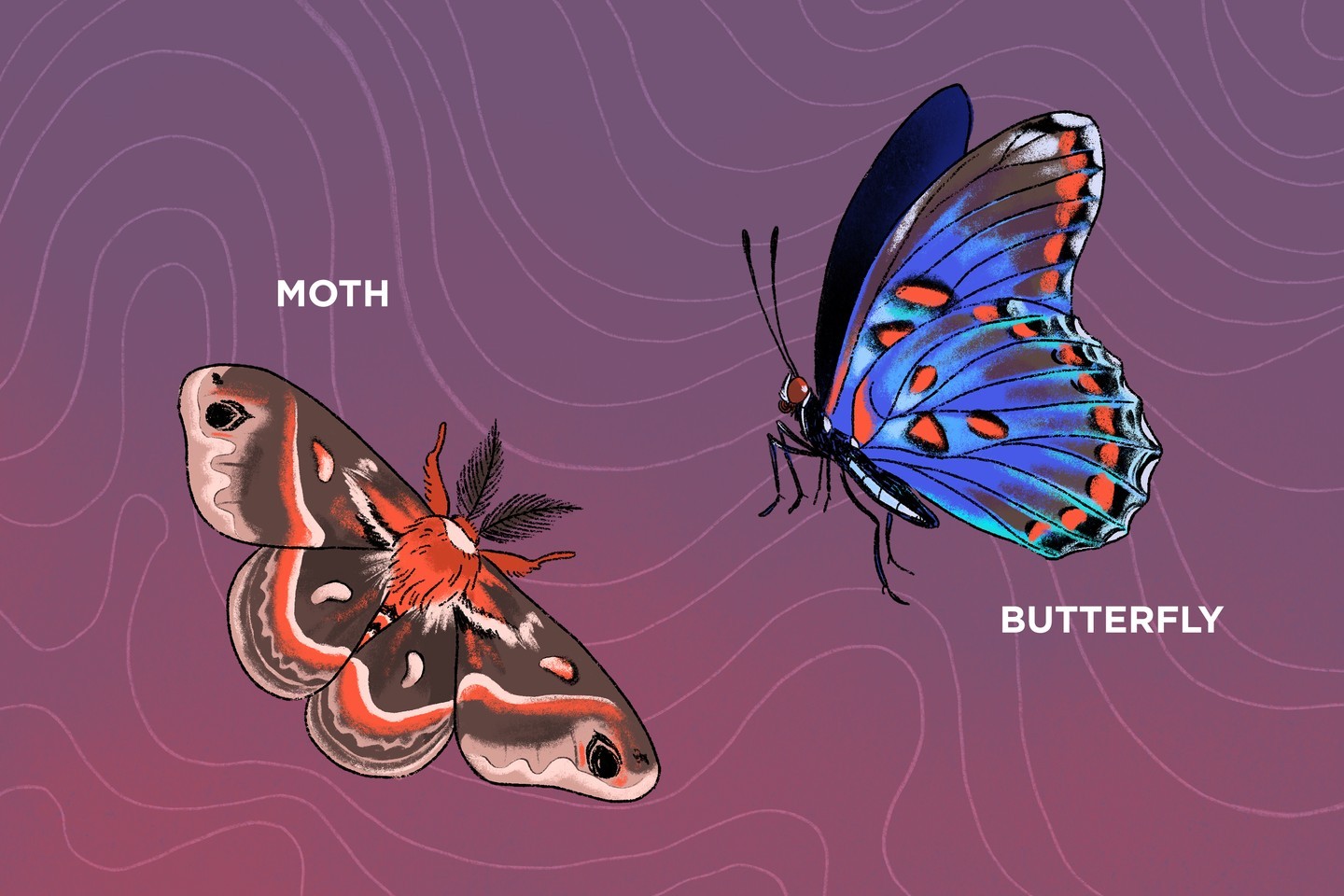Unveiling the Enigmatic World of Moths and Butterflies
Summary:
– Both moths and butterflies undergo complete metamorphosis.
– They are vital pollinators and are crucial food sources for many animals.
– Moths and butterflies possess distinct characteristics that set them apart.
Imagine yourself exploring a colorful garden on a sunny day, surrounded by delicate and graceful winged creatures fluttering around you. As you observe these magnificent insects, have you ever wondered about the differences between moths and butterflies? Welcome to a world filled with surprises as we unveil these enchanting creatures’ unique and fascinating aspects
Complete Metamorphosis: A Transformative Journey
Both moths and butterflies undergo a remarkable process called complete metamorphosis. This intricate transformation consists of four stages: egg, larva, pupa, and adult. Remarkably, these seemingly ordinary creatures progress through each stage, unraveling their true beauty as they mature.
The Egg Stage: A Promise of New Life
Tiny and fragile, the eggs laid by both moths and butterflies hold the promise of new life. These eggs are strategically placed by females, often on specific host plants that nourish their newborns. Witnessing the hatching of these eggs is a testament to the remarkable cycle of life.
The Larval Stage: Journey to Adulthood
Once hatched, the larvae of moths and butterflies, commonly known as caterpillars, embark on a journey of growth and development. These voracious eaters feed on various plants, aiding in the natural pruning and maintaining the ecosystem’s balance. Their distinct patterns and colors often serve as fascinating camouflage in their environments, protecting them from potential predators.
The Pupa Stage: Embracing Transformation
Both butterflies undergo a miraculous transformation within a protective casing called a chrysalis or cocoon during the pupal stage. Inside this delicate structure, the caterpillar’s body undergoes intricate changes, dissolving and rearranging its tissues in preparation for its majestic emergence as an adult. It is nature’s magical act, unfolding in secrecy.
The Adult Stage: Wings That Inspire
Finally, after patiently waiting within their pupal casing, moths and butterflies emerge as adults, gracefully spreading their wings to take flight. Their intricate patterns and vibrant colors mesmerize us, serving as a true testament to the wonders of nature. This remarkable transformation highlights their vital role as pollinators, playing a crucial part in pollinating flowers and aiding in the reproduction of various plant species.
Pollinators Extraordinaire: A Shared Responsibility
Moths and butterflies, with their delicate yet purposeful flight, play a significant role as pollinators. As they flit from flower to flower in search of nectar, they inadvertently transfer pollen grains, contributing to the survival and diversity of plant life. Pollination is an essential ecological process affecting the flora and the fauna that rely on these plants for sustenance.
Furthermore, these enchanting insects are an integral part of the food chain. Many animals depend on moths and butterflies as a vital food source. From birds to bats, lizards to frogs, and even spiders, these creatures nourish many animals, contributing to the delicate balance of our ecosystems.
Distinguishing Characteristics: Moths vs. Butterflies
While moths and butterflies are similar in many ways, several distinct characteristics set them apart. Understanding these differences enhances our appreciation for the intricate world of insects.
Physical features: Butterflies are often recognized for their vibrant colors, slender bodies, and club-shaped antennae. Moths, in contrast, possess a broader range of colors and patterns, including subtle earth tones, adapting to their nocturnal lifestyle. They typically have feathery or comb-like antennae, aiding them in detecting female pheromones.
Behavior and habitat: Butterflies are diurnal creatures, showcasing their colors during daylight hours. Fluttering from flower to flower, they are often associated with open fields and gardens. On the other hand, moths are primarily nocturnal, venturing out under the cover of night. They are attracted to artificial lights and are commonly found near forests and woodlands.
Resting position: When at rest, butterflies typically fold their wings vertically above their backs. This position showcases their vibrant colors, serving as a visual display to ward off potential predators. Moths, however, tend to fold their wings horizontally or tent-like over their bodies, camouflaging themselves amidst their surroundings.
Life cycle: While both butterflies undergo complete metamorphosis, their durations vary. Butterflies generally have a shorter lifespan, going through their life cycle within a week or months. Moths, on the other hand, can exhibit a more extended life cycle, spending a significant part of their lives as moth larvae before transitioning to their adult stage.
Conclusion:
Moths and butterflies weave a captivating tapestry within the natural world. Through their complete metamorphosis, they mesmerize us with their grace, beauty, and transformative journey. As essential pollinators, they foster biodiversity and serve as a vital food source for numerous creatures, reminding us of the interconnectedness of all living beings. Next time you encounter one of these enchanting insects, may you perceive the hidden wonders that lie within their delicate wings. Step into their world and the beauty of nature will truly unfold before you.
*****
Source Description
🦋 Both moths and butterflies undergo a complete metamorphosis, are important pollinators and serve as an important food source for various animals. Despite their similarities, quite a few characteristics set these winged insects apart. Learn more at the link in our bio!

